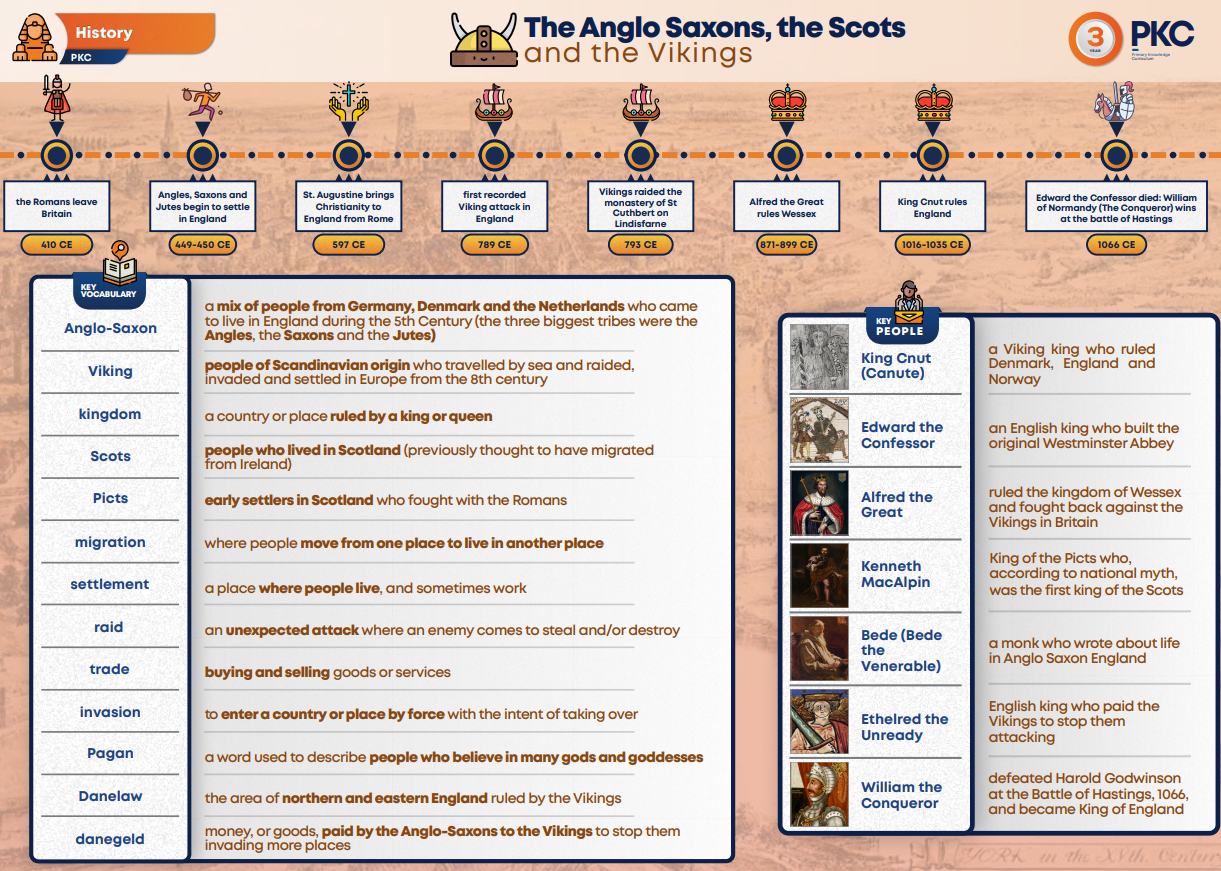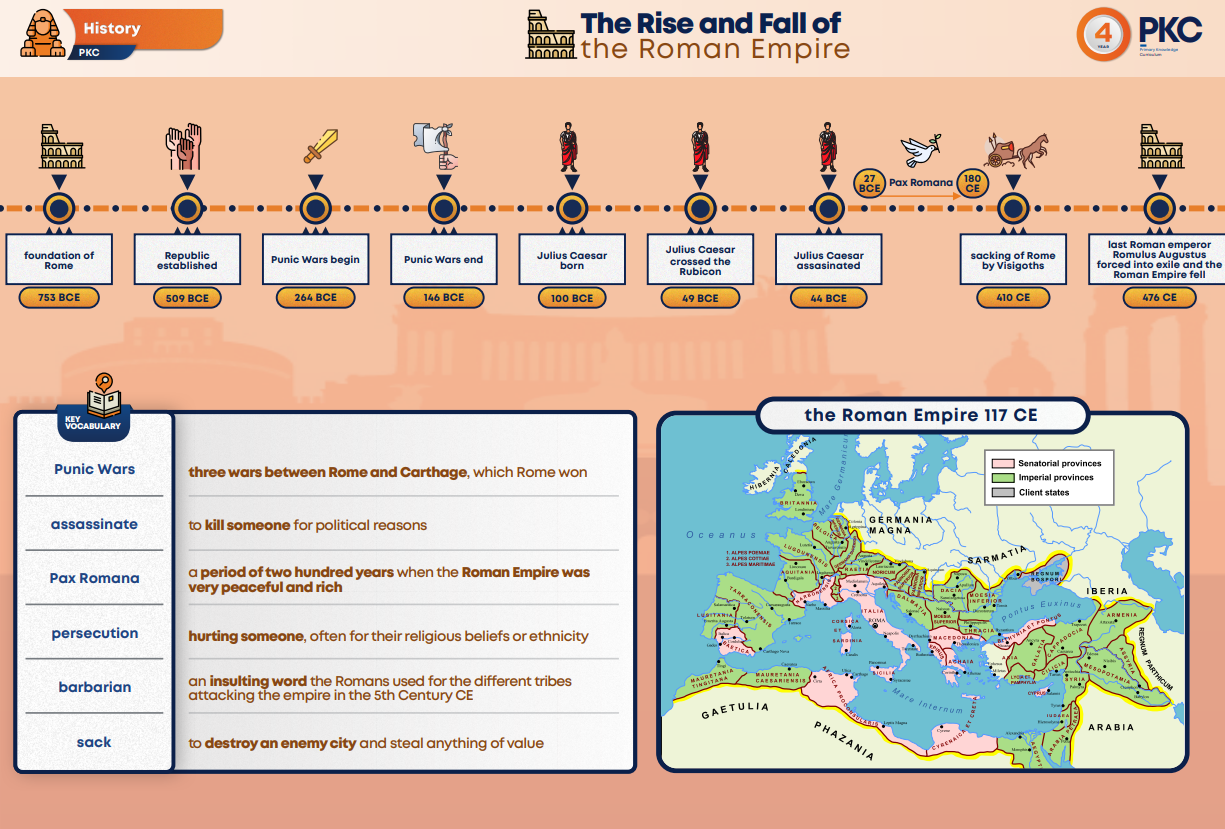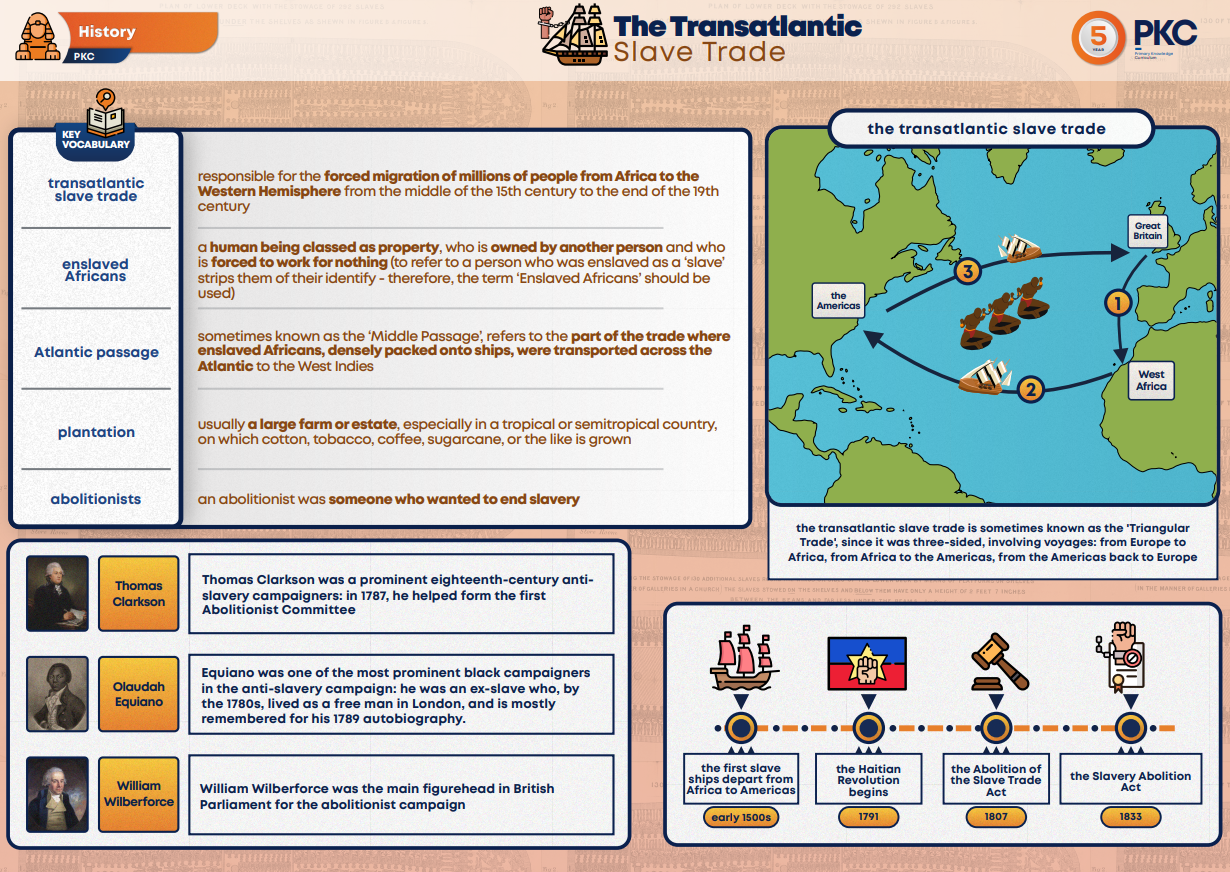Spring 1 and 2
Year 3
Anglo-Saxon, Scots & Vikings
In this unit, Year 3 will learn about the monk and scholar, Bede the Venerable, who wrote a book about the English people and the church. In this unit, the pupils will also learn about the Picts and the Scots. They will discuss how historians find out about these people in the past, and how they engage in historical debate, such as what the symbols on the Pictish Stones can tell us. During this unit, the pupils will learn about the Vikings and the significance of Viking long ships that enabled them to travel, trade, raid and invade. They will look at the relationship between the Anglo-Saxons and the Vikings; the battles and the compromises that took place during this period. They will learn about the lives of significant people during this period, such as Alfred the Great, King Canute and Edward the Confessor.
Year 4
The Rise and Fall of Rome
This unit helps children to understand how power and influence were important to the success of the Roman Empire, but ultimately how the struggle for power led to the fall of the Empire. Children will explore concepts such as empire, civilisation, conflict, and religion in this unit. The unit begins by looking at the Punic Wars, three major wars fought over 118 years between the Romans and the Carthaginians. Children will learn about the significant historical figure Hannibal, and will learn that he is thought to have taken elephants across the Alps to attack Rome. They will learn that after being victorious in the third Punic War, the Roman Empire gained power and influence and was able to spread. The children will also learn about the historically significant Julius Caesar, including his life and his assassination. They will learn the phrase ‘crossing the Rubicon’ and will understand that Julius Caesar led his armies across the Rubicon River, making a decision to attack Rome and committing a crime that he could never undo. Children will learn the significance of this military decision. This unit explains what led to Caesar’s assassination by senators who conspired to kill him to stop his reign as ‘dictator for life’, and the impact of this. This story helps children to understand how power was distributed, and fought for, in Rome. This unit moves on to explore the Pax Romana. They will learn about the spread of Christianity and Emperor Constantine’s vision of the cross. The children will also build on their knowledge of polytheistic religions. Finally, the unit explores the reasons for the fall of the Roman Empire, including power struggles, invasions, civil war and the exile of Romulus Augustus, the last Roman emperor.
Year 5
The Transatlantic Slave Trade
During this unit, the children will build upon their knowledge of empire and slavery. They will look at the atrocities of the Transatlantic Slave Trade, looking at how and why the forced migration of millions of Africans took place. They will learn how enslaved Africans were treated, what conditions were like on the ‘Atlantic Passage’ and what life was like for enslaved Africans who worked on the plantations. The children will also learn about African resistance and will look at the Haitian Revolution, which was influenced by the French Revolution. The children will learn about the abolition of slavery. Prominent abolitionists will be studied, which include Elizabeth Heyrick, Thomas Clarkson, William Wilberforce and Olaudah Equiano. The children will learn about the tactics used by the abolitionists to raise awareness of the atrocities of the slave trade back in Britain.
Year 6
The Victorian Age
During this unit, the children learn about the significant life of Queen Victoria: both her personal life and some of her decisions as a monarch, including her involvement with the British Empire. In addition to the political context of this time, this unit also delves deeper into the social aspects of Victorian Britain, looking in particular at the lives of the poor. During the unit, children will consider the similarities and differences between the lives of the rich and the poor in Victorian England. Children will have access to primary sources to explore what it was like to live in a Victorian slum or Workhouse and discuss how attitudes to the poor were reflected in new legislation. The children will also learn about more positive aspects of the Victorian period, looking at the significance of the Great Exhibition and the growth in technology and new discoveries made by the Victorians.




